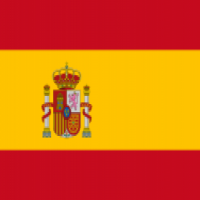Summary:
Researchers from a Spanish university have developed a fire-resistant cement precast lightened with industrial waste of polymeric origin from recycled vehicle roofs, made in the form of a block for the construction of walls or a similar structure.
The types of association sought are license and manufacturing agreements with any size organization in the construction sector, precast industry and other related industries.
Description:
The Spanish research group is an interdisciplinary group in the areas of knowledge of architecture, structures and materials. This research group belongs to a well established medium-sized Spanish university, housing many other research groups.
The university has been very active in several European research and innovation programmes (H2020 and previous FPs, LIFE, Justice, ERASMUS+, Interreg, COST, LLP, IEE, Research Fund for Coal and Steel, D. G. for Competition Policy and Strategy, Science for Peace and Security Programme-OTAN…) with over 50 European projects; with the role of coordinator in 22 projects and over 8.4 M€ overall EU funding received. Currently, this university participates in 26 on-going projects (in 12 of them as coordinator) in 8 different EU programmes with an average of 1.7 M€ of EU funding in the last 4 years.
The novelty of the invention is based on the use of the waste from the roofs generated in the automobile industry, which is valued as raw material with added value for its incorporation into the precast industry of the construction sector. The percentage of residue present in the final material depends on the required properties of the final product, obtaining properties in the hardened state sufficient to be able to apply the current legislation.
The characteristics and nature of construction materials, based on cement, make it possible to enhance foams that come from polyurethane insulating panels with remains of other materials (adhesives, metal oxides, remains of paint and / or plasters, etc.).
The cement is of the Portland cement type with a mass composition of 95-100% clinker and 0-5% minor components. This alteration in the components of the precast cement object of the invention helps to maintain its mechanical strength, obtaining recycled materials with certainly structural capabilities, but at the same time, with a low density compared to conventional light mortars. This precast cement lightened with polymer matrix residues provides improvements in the physical characteristics of the precast, with weight reductions of up to 70%.
Potential applications of the fire-resistant cement are as follows:
- Blocks of compact cement that are installed by joining courses with mortar and are worked in a similar way to brick.
- Lintels to be installed on top of joinery frames where bricks are left unattached.
- Panels, plates and foundations for buildings, industrial buildings, etc.
- Manholes for sanitation networks or electrical networks used in urbanizations.
- Concrete pavements and paving stones for pedestrian walkways, landscaped areas and low-traffic roads.
The researcher group is interested in international cooperation under license agreement and / or manufacturing agreement. The desired partners could be any size companies in the construction or related sectors, with the precast industry being the most suitable.
Type (e.g. company, R&D institution…), field of industry and Role of Partner Sought:
License agreement
- Type: local authorities or any size private companies.
- Activity: precast industry, construction industries sector or related ones.
- Role: a transfer of rights involving the authorization to use the patented technology, in return for a fee or share of royalties.
Manufacturing agreement
- Type: any size private companies.
- Activity: precast industry, construction industries sector or related ones.
- Role: establish an agreement with an eye on production of this prefabricated cement with fire resistant polymeric residues.
Stage of Development:
Field tested/evaluated
Comments Regarding Stage of Development:
Development phase – laboratory tested
IPR Status:
Patent(s) applied for but not yet granted
Comments Regarding IPR Status:
The patents have been applied for in Spain and EU
External code:
TOES20210730001








